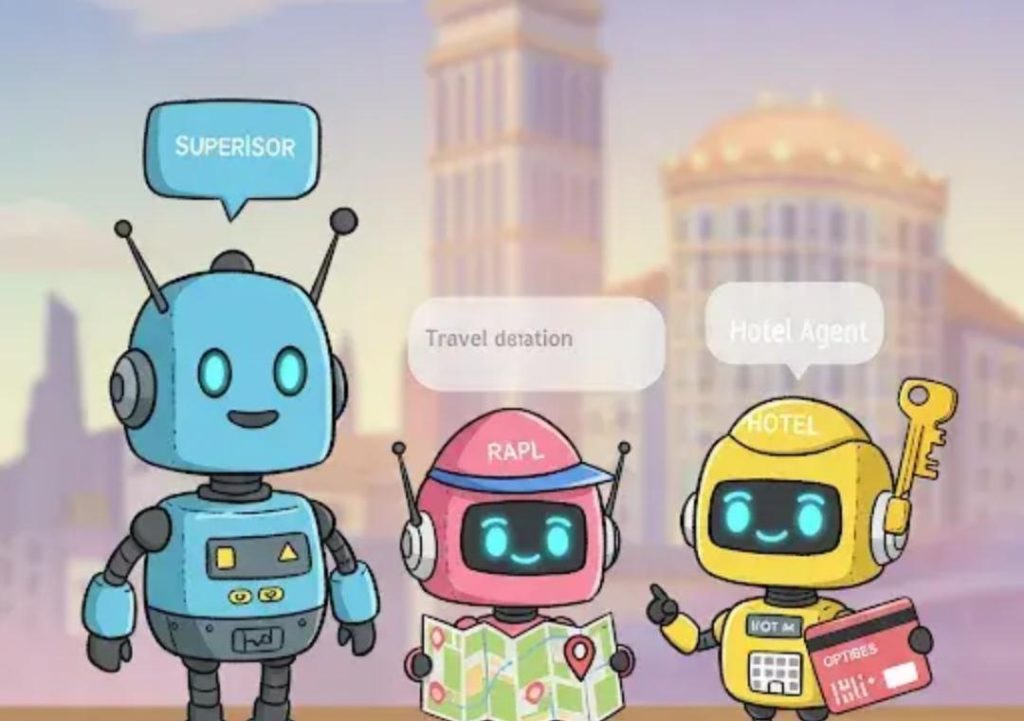
Multi-agent collaboration mimics real team dynamics
In recent years, Artificial Intelligence (AI) has revolutionized the way we approach various tasks, from data analysis to customer service. However, most AI systems rely on a single agent to perform a specific task, which can lead to limitations and inefficiencies. What if you could deploy a full team of AI agents, each specializing in different tasks, communicating and collaborating seamlessly across the board? Welcome to the world of multi-agent systems, where AI agents work together like human teams, but at machine speed and scale.
The benefits of multi-agent collaboration
In traditional AI systems, a single agent is responsible for completing a task from start to finish. While this approach has its advantages, it also has significant limitations. For instance, a single agent may not possess the necessary expertise or resources to tackle complex tasks, leading to incomplete or inaccurate results. In contrast, a team of AI agents can pool their knowledge and resources to achieve far more than a single agent could alone.
Moreover, human teams are known for their ability to communicate and collaborate effectively, which is often lacking in traditional AI systems. Multi-agent systems can replicate this human teamwork by allowing agents to communicate, share information, and work together to achieve common goals.
How multi-agent systems work
So, how do these systems work? In a multi-agent system, each agent is designed to specialize in a specific task or set of tasks. For example, an agent might be responsible for data collection, while another agent focuses on data analysis. Each agent communicates with other agents through a shared platform or interface, allowing them to share information and work together seamlessly.
This modular setup enables agents to work together on complex tasks, such as research, validation, and reporting. For instance, in a research project, one agent might collect and analyze data, while another agent verifies the findings and another agent presents the results in a report.
Real-world applications of multi-agent systems
Multi-agent systems have numerous real-world applications across various industries. For example:
- Healthcare: In healthcare, multi-agent systems can be used to analyze medical data, identify patterns, and provide personalized treatment recommendations. Agents can work together to analyze patient data, identify potential health risks, and develop treatment plans.
- Finance: In finance, multi-agent systems can be used to analyze market trends, identify investment opportunities, and make trading decisions. Agents can work together to analyze financial data, identify patterns, and make investment decisions.
- Manufacturing: In manufacturing, multi-agent systems can be used to optimize production processes, manage supply chains, and improve product quality. Agents can work together to analyze production data, identify bottlenecks, and make adjustments to improve efficiency.
The future of multi-agent systems
As AI technology continues to evolve, we can expect to see more widespread adoption of multi-agent systems. In the future, we may see multi-agent systems being used in a wide range of applications, from customer service to environmental monitoring.
Moreover, as multi-agent systems become more advanced, we can expect to see increased collaboration between human teams and AI agents. For instance, in customer service, human customer service representatives may work alongside AI agents to provide personalized support and solutions.
Conclusion
In conclusion, multi-agent systems offer a powerful new approach to AI development, allowing different agents to specialize, communicate, and collaborate across tasks. By mirroring human teamwork, multi-agent systems can achieve far more than traditional single-agent systems, and can be applied to a wide range of industries and applications.
As AI technology continues to evolve, we can expect to see more widespread adoption of multi-agent systems, leading to increased efficiency, productivity, and innovation. Whether you’re a developer, entrepreneur, or simply someone interested in the latest AI trends, understanding multi-agent systems is essential for staying ahead of the curve.






